Overview
Posterior Interosseous Nerve Compression
Patients with posterior interosseous nerve compression present with inability to extend the wrist, fingers and thumb. Many times this is known as Saturday night palsy as the patient does not remember what happens and falls on their arm causing a compression of the radial nerve. The patient is carefully evaluated for what the potential etiology is of the compression of the radial nerve. Surgery is offered as a last resort.
Dr. Anup Patel Advantage
Dr. Anup Patel performs decompression of the rarest disorders of nerve compressions in the world. Trained by Dr. David T.W. Chiu, a pioneer and leader in microsurgery and nerve pathology, Dr. Patel often employs microsurgical techniques with precise dissection to relieve pressure on the nerves.
These disorders are extremely rare, but patients come from around the globe for his expertise in this field. These rare disorders include Warterberg’s syndrome, PIN Syndrome, AIN Syndrome, and recurrent carpal tunnel syndrome.
Dr. Patel uses microsurgical techniques with loupe magnification to identify the radial nerve and free it from compressive sites.
In posterior interosseous nerve syndrome, the radial nerve is freed from the following structures including leash of Henry (recurrent radial vessels, the extensor carpi radialis brevis, the arcade of Frohse (proximal edge of supinator), distal edge of supinator, and radiocapitellar tissue.

Symptoms
- Pain and ache over the top part (dorsal) of the forearm
- Motor weakness manifested by inability to extend the wrist, fingers, and thumb
Causes
- Compression of the posterior interosseous nerve (a branch of the radial nerve) in the forearm
Treatment: Non-Surgical
- NSAIDs
- Activity modification
- Steroidal medication
Treatment: Surgical
- Release of the compressive structures of the posterior interosseous nerve in the forearm
Patient 1
62 year old female dentist presents with radial nerve dysfunction, namely posterior interosseous syndrome, for the last six months. She comes after seeing several other surgeons for loss of ability to extend the wrist and all the digits including the thumb. She decompression of the posterior interosseous nerve using microsurgical techniques and resolution of her symptoms. She has returned to being a dentist without any issues and full strength of her wrist and fingers.
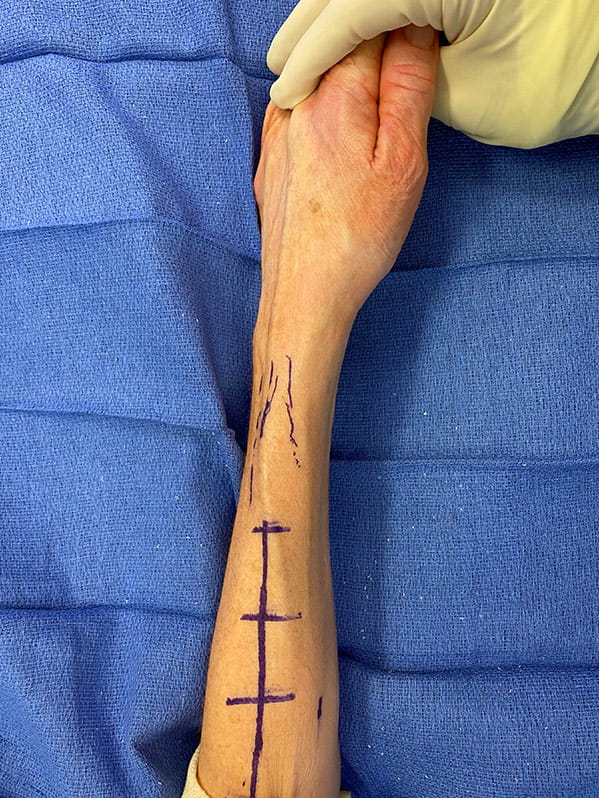
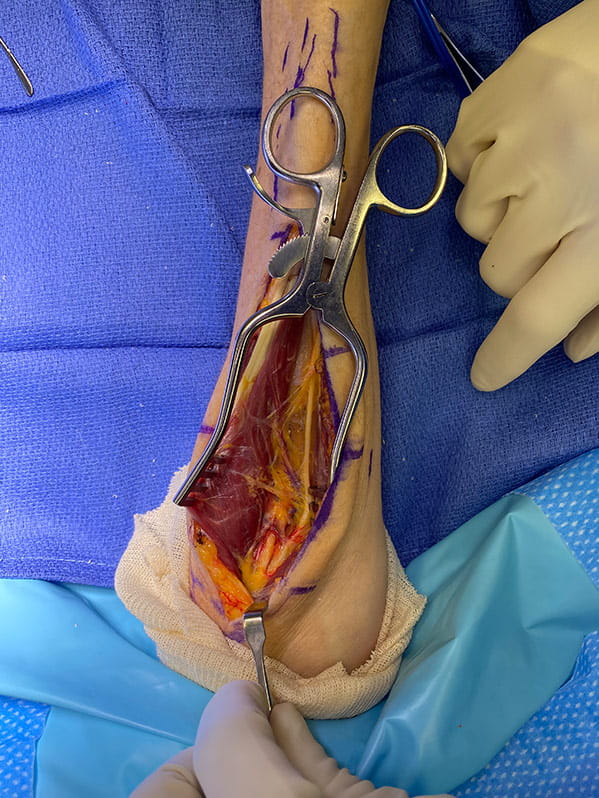
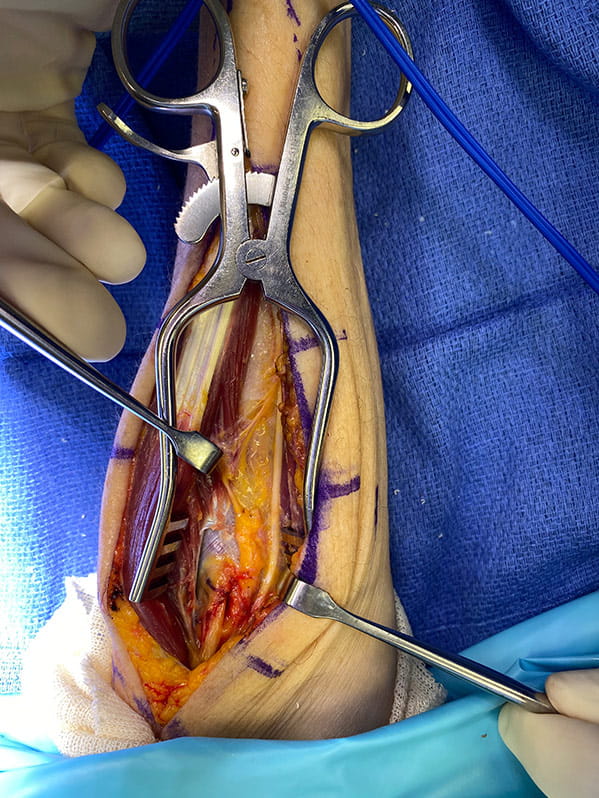
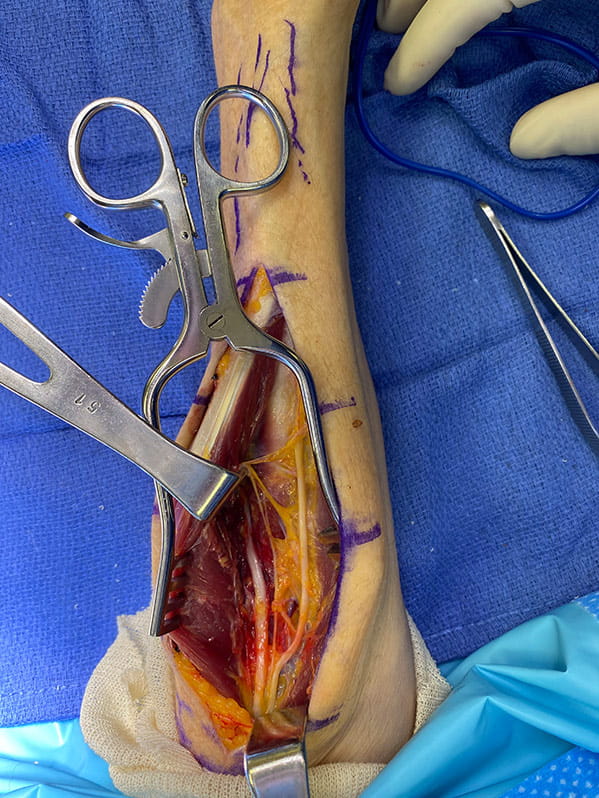

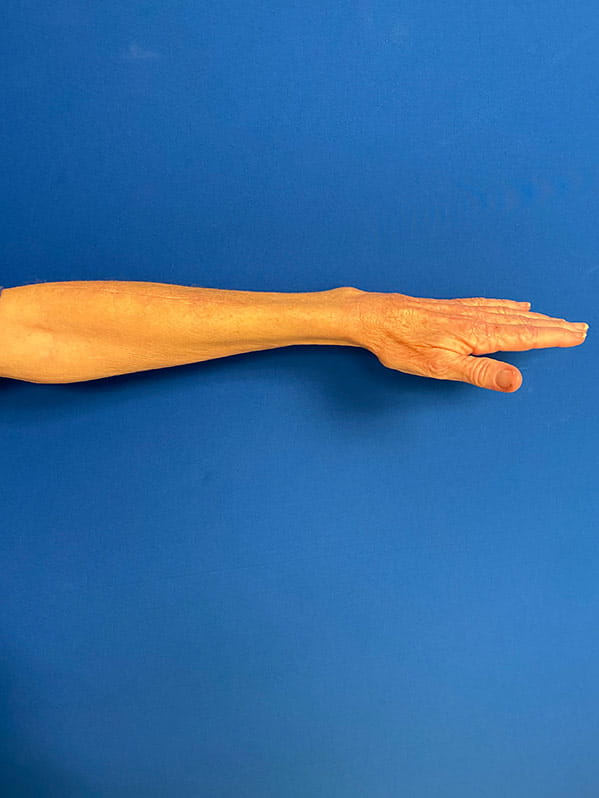
Overview
Wartenberg’s Syndrome Compression
A compression of one of your nerves in your upper extremity may lead to numbness, tingling and shooting pain into your fingertips waking you up at night with possible loss of hand function. Nerve compressions are extremely common and negatively affect your life.
Some of the more common nerve compressions in the hand and wrist are carpal tunnel syndrome, cubital tunnel syndrome and ulnar tunnel syndrome. You can certainly have one or more of these nerve compressions simultaneously.
We treat all nerve compressions offering both non-surgical and surgical options. Specifically, as a hand and microsurgeon, I use the most up-to-date techniques including the use of a microscope, muscle flaps, and nerve conduits/wraps when indicated to release the compression on the involved nerve.
Dr. Anup Patel Advantage
Dr. Anup Patel performs decompression of the rarest disorders of nerve compressions in the world. Trained by Dr. David T.W. Chiu, a pioneer and leader in microsurgery and nerve pathology, Dr. Patel often employs microsurgical techniques with precise dissection to relieve pressure on the nerves.
These disorders are extremely rare, but patients come from around the globe for his expertise in this field. These rare disorders include Warterberg’s syndrome, PIN Syndrome, AIN Syndrome, and recurrent carpal tunnel syndrome.
Dr. Patel uses microsurgical techniques with loupe magnification to identify the radial nerve and free it from compressive sites.
In Wartenberg syndrome, the radial nerve is freed from fascia between the brachioradialis and extensor carpi radialis longus.

Symptoms
- Pain and ache over the top part (dorsal) of the wrist
- Numbness, tingling and paresthesias in top part (dorsal aspect) of the wrist, thumb and index fingers
Causes
- Compression of the dorsal sensory branch of the radial at the level of the wrist
Treatment: Non-Surgical
- NSAIDs
- Activity modification
- Steroidal medication
- Removal of tight watches, bracelets, etc.
Treatment: Surgical
- Release of the compressive structures of the dorsal sensory branch of the radial at the level of the wrist
Patient 2
64 year old male musician who presents with loss of sensation in the radial nerve distribution of the hand that is accompanied by a cyst and immense pain over the compressive site. This is affecting his ability to play guitar. The patient undergoes decompression of the dorsal sensory branch of the radial nerve regaining full sensation and ability to play music again within 6 weeks of the operation.





Book an Appointment or Ask a Question

Dr. Anup Patel
Dr. Anup Patel is a board-certified plastic and reconstructive surgeon trained in aesthetic, hand/upper extremity and reconstructive surgery. He completed his plastic and reconstructive surgery training at the premier Yale University followed by a hand and microsurgery fellowship at the New York University Institute of Reconstructive Plastic Surgery and Mount Sinai Department of Orthopedics. Dr. Patel received his MD and MBA from the Yale University School of Medicine and Yale University School of Management, respectively. He graduated as the valedictorian of his class at the University of Florida majoring in economics, biochemistry and molecular genetics and valedictorian of his high-school class at Lake Highland.




